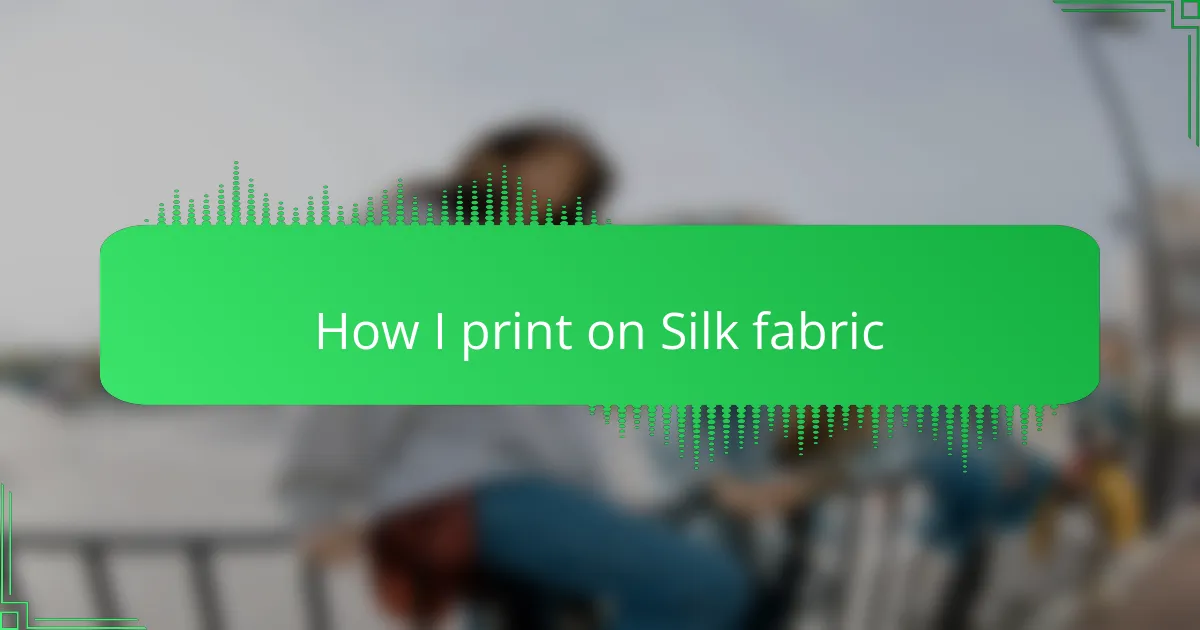Key takeaways
- Silk fabric requires careful handling due to its delicate nature, impacting print quality and design clarity.
- Preparation steps like washing, drying flat, and stretching are crucial for achieving crisp and vibrant prints.
- Selecting the appropriate printing method (e.g., screen or digital) is essential for maintaining the elegance of silk.
- Caring for printed silk involves gentle washing, flat drying, and cautious ironing to preserve print vibrancy and fabric integrity.
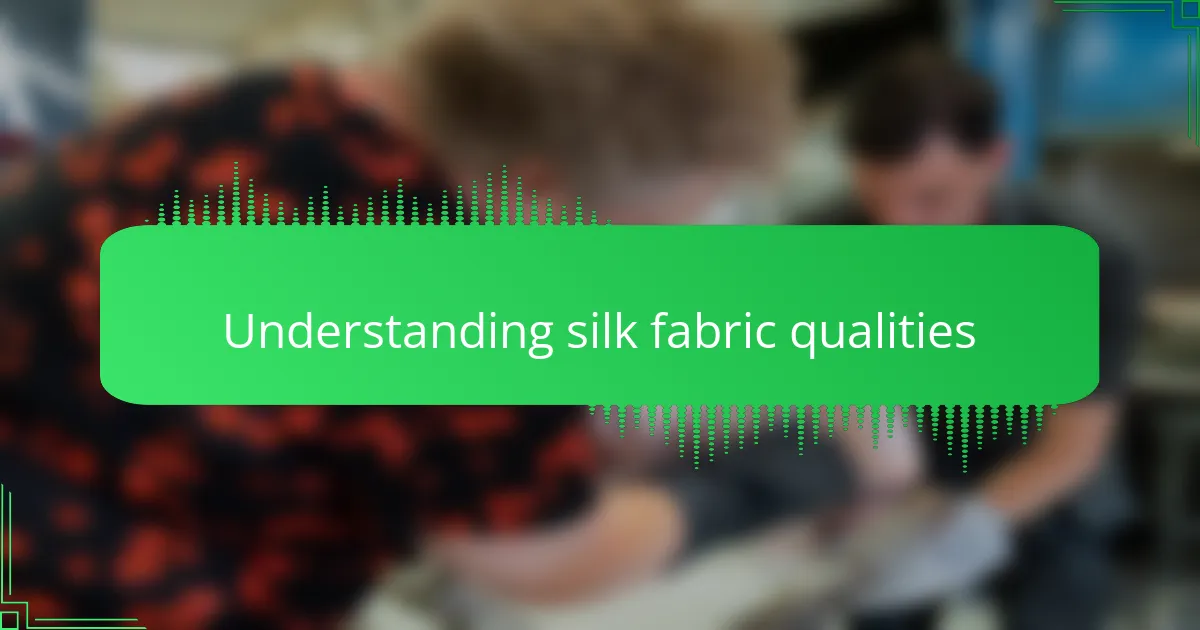
Understanding silk fabric qualities
Silk fabric has a unique texture and sheen that instantly elevates any printed design. From my experience, its smooth surface allows for vibrant colors, but it also demands careful handling because of its delicate nature. I remember the first time I printed on silk — the results were stunning, but the process taught me patience and precision.
One aspect I found particularly fascinating is how silk’s natural fibers affect ink absorption, making it necessary to choose the right printing method. Here are some key qualities of silk fabric to keep in mind:
- Smooth and lustrous surface enhances color vibrancy
- Lightweight and breathable, ideal for comfortable wear
- Delicate and sensitive fibers require gentle handling
- High absorbency affects how ink sets and dries
- Prone to wrinkles and damage from heat, impacting print quality
Understanding these traits really changed how I approach silk printing, turning it from a tricky task into a creative opportunity.
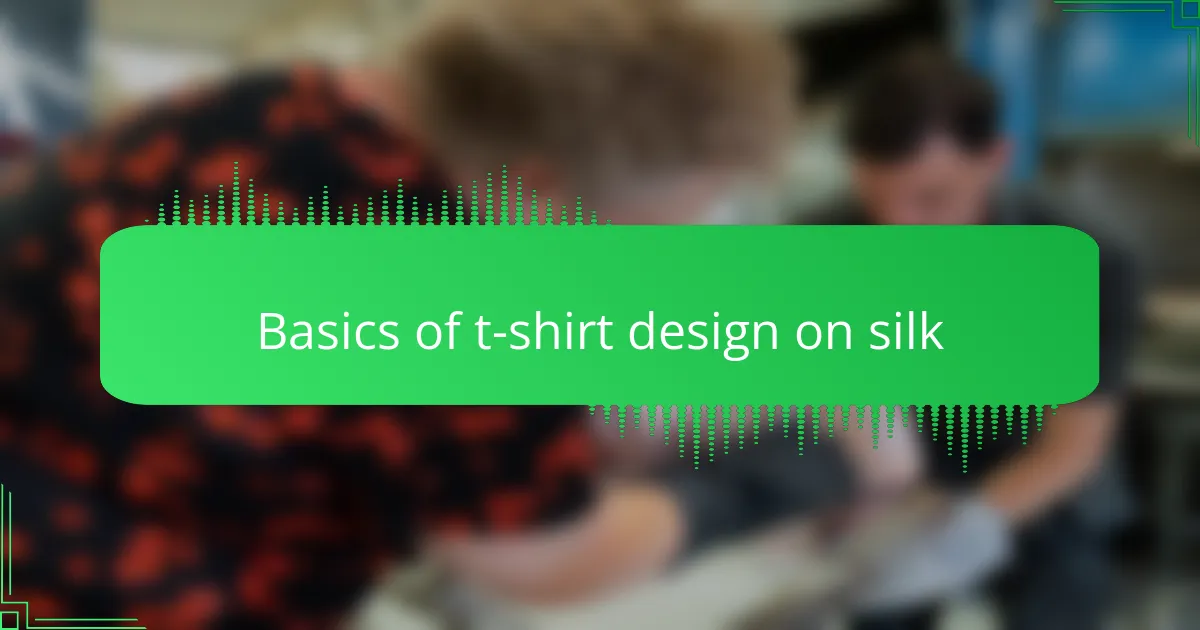
Basics of t-shirt design on silk
Designing a t-shirt on silk feels like working with a living canvas—each stroke of ink interacts differently compared to cotton or polyester. Have you ever wondered why some prints on silk pop with brilliance while others fade or smudge? From my experiments, getting the design basics right means respecting silk’s delicate balance between absorbency and sheen.
One key lesson I learned early on is that less can be more. Because silk absorbs ink deeply, overly complex designs can lose clarity or bleed, so I focus on bold, simple graphics that play up silk’s natural glow. It’s almost like silk invites you to slow down and design thoughtfully rather than rush into detailed chaos.
Another crucial point is how the fabric moves during printing. Silk’s lightweight and stretchiness demand a firm yet gentle touch when applying prints. I recall a project where ignoring this caused distortions in the image—since then, I always ensure the fabric is perfectly taut and stable before printing. It’s these small adjustments that make all the difference in turning a silk t-shirt into a wearable piece of art.
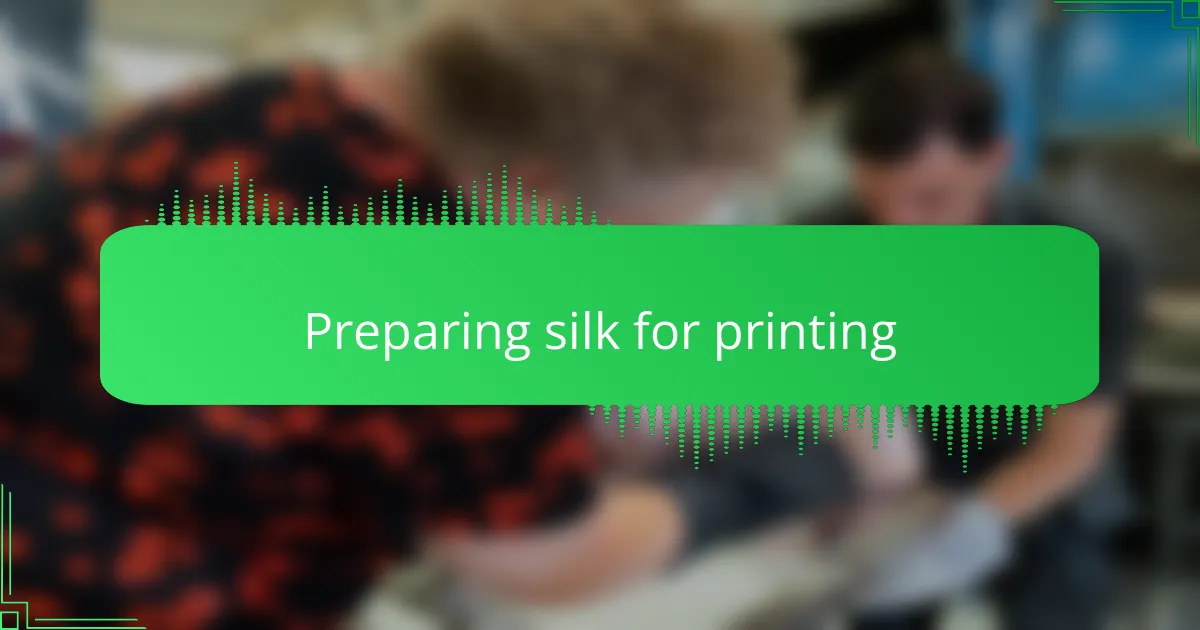
Preparing silk for printing
Preparing silk for printing requires careful cleaning and stretching to ensure the fabric holds the design well. From my experience, even the softest silk can cause smudging if not properly prepped, so washing it gently and allowing it to dry flat makes a big difference. I’ve also found that stretching silk tightly on a frame prevents unwanted wrinkles during printing, which saves a lot of frustration later.
| Preparation Step | Purpose |
|---|---|
| Washing | Removes oils and impurities to help ink adhere better |
| Drying Flat | Prevents wrinkles and distortion of the fabric |
| Stretching on Frame | Keeps fabric taut for crisp, clean print results |

Choosing the right printing method
Choosing the right printing method for silk fabric is crucial because silk is delicate and requires gentle handling. From my personal experience, methods like screen printing and digital printing work well, but each comes with its own set of pros and cons. Understanding these differences saved me a lot of trial and error in my early projects.
| Printing Method | Pros | Cons |
|---|---|---|
| Screen Printing | Vibrant colors, durable prints | Requires careful ink selection, can stiffen silk |
| Digital Printing | Fine details, soft feel, less setup time | Less vibrant on silk, may require pre-treatment |
| Sublimation Printing | Long-lasting and vibrant on synthetic blends | Doesn’t work well on 100% silk, limited color range |
| Heat Transfer | Affordable and quick for small runs | Can damage silk, may peel over time |
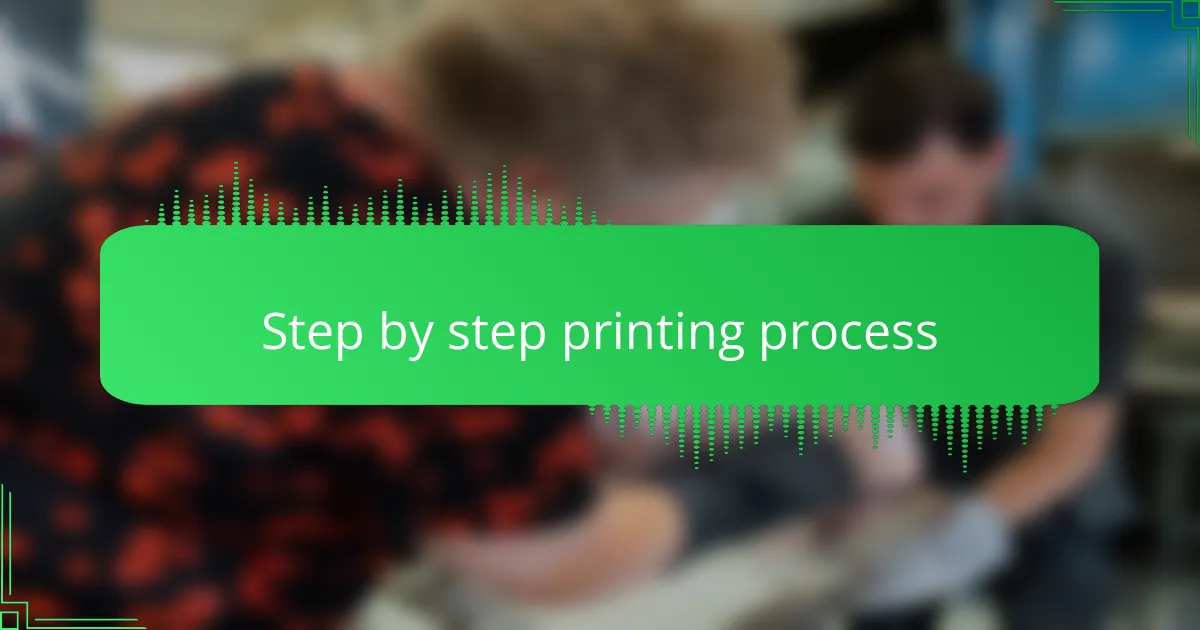
Step by step printing process
Once the silk is prepped and your design is ready, the actual printing process begins by securing the fabric on a frame to keep it taut. I’ve learned the hard way that any slack or wrinkles can blur the design instantly—have you ever tried printing on a wobbly surface? It’s frustrating, but making sure the silk is firm sets a strong foundation for crisp, clean prints.
Next comes applying the ink using your chosen method, whether it’s screen or digital printing. From my experience, applying too much ink can overwhelm silk’s delicate fibers, causing smudges or bleeding. I usually start with a lighter application and build up slowly—that way, the silk breathes and the colors pop without losing their vibrancy.
Finally, patience is key during the drying phase. Silk’s high absorbency means that rushing to handle the fabric can distort the design or cause unwanted wrinkles. I always let my prints dry flat and undisturbed, sometimes even overnight, because to me, waiting is part of respecting the fabric’s unique nature and achieving that flawless finish. Have you noticed how a little patience can transform a good print into a great one?
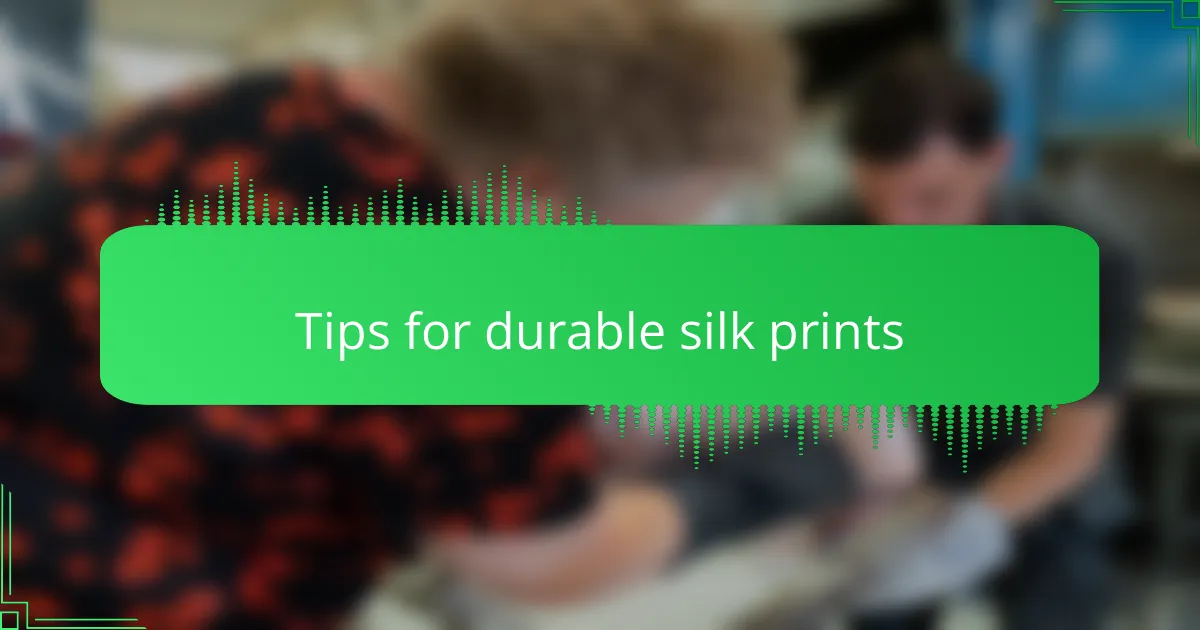
Tips for durable silk prints
When I first started printing on silk fabric, I quickly realized that durability was a major challenge. Silk is delicate, so I had to find gentle yet effective methods to keep the prints vivid after multiple washes. Through trial and error, I learned that preparation and aftercare play a crucial role in extending the life of my silk prints.
Here are some tips I’ve found especially helpful for creating durable silk prints:
- Pre-wash the silk fabric to remove any finishes or sizing that could interfere with ink adhesion.
- Use silk-specific ink or dyes designed to bond well with natural fibers.
- Apply a thin layer of fixative or heat-set the print carefully with a low-temperature iron.
- Avoid aggressive washing; hand wash the silk print gently in cold water using mild detergent.
- Dry the fabric flat and away from direct sunlight to prevent fading.
- Store printed silk items away from moisture and harsh conditions to maintain fabric integrity.
These simple practices have saved me a lot of frustration and helped me keep my silk prints looking fresh and beautiful longer than I initially expected.
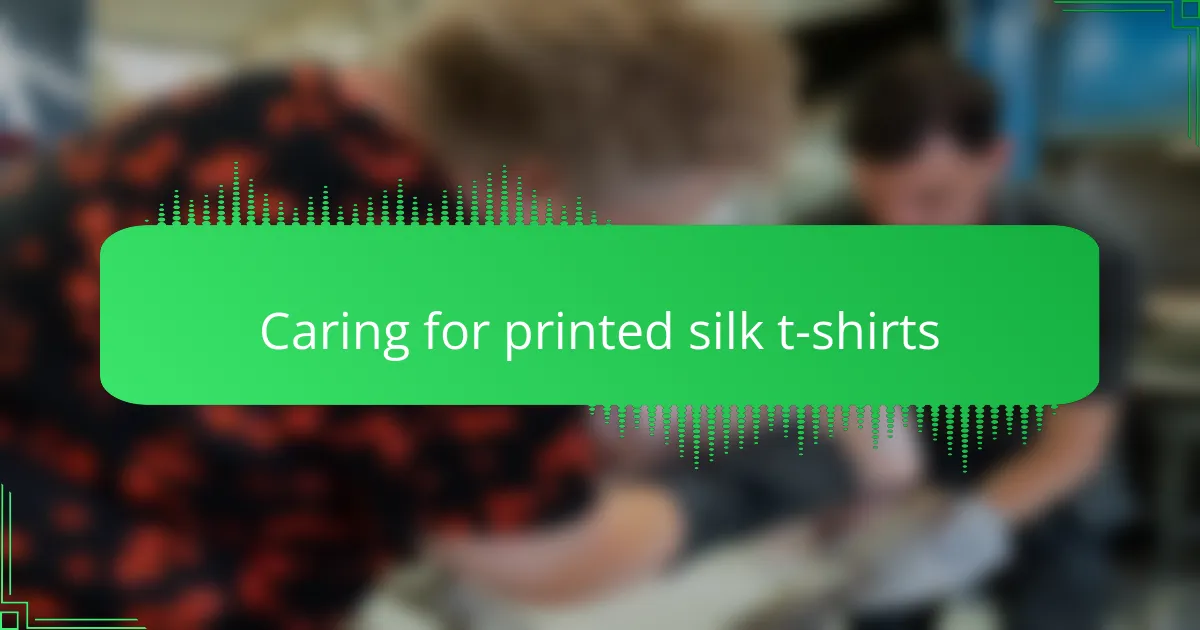
Caring for printed silk t-shirts
Caring for printed silk t-shirts feels like tending to a delicate treasure. I’ve found that hand washing in cold water with a mild detergent is the best way to keep the print vibrant without stressing the fabric. Have you ever noticed how a harsh wash can dull those brilliant colors almost overnight? That gentle approach makes all the difference.
Drying silk flat and out of direct sunlight has saved many of my prints from fading too quickly. I remember once leaving a freshly printed t-shirt on a sunny windowsill—I thought some sunshine would be good—but it ended up weakening the design. Since then, I always treat drying as an essential step, patiently letting the silk rest and preserve its glow.
And when it comes to ironing, I’m extremely cautious. Using a low heat setting and placing a cloth between the iron and the silk helps me avoid any accidental damage to both fabric and print. It’s a small action but one that protects all the effort put into creating a stunning silk t-shirt. Have you tried this trick? It’s been a game-changer in my silk care routine.
